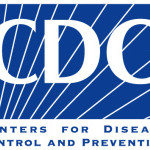- Industrie: Government
- Number of terms: 6326
- Number of blossaries: 0
- Company Profile:
The droplet nuclei that are expelled by an infectious person (e.g., by coughing or sneezing); these droplet nuclei can remain suspended in the air and can transmit M. tuberculosis to other persons.
Industry:Health care
The American Institute of Architects, a professional body that develops standards for building ventilation.
Industry:Health care
The ratio of the volume of air flowing through a space in a certain period of time (i.e., the airflow rate) to the volume of that space (i.e., the room volume); this ratio is usually expressed as the number of air changes per hour (ACH).
Industry:Health care
The degree to which air supplied to a room mixes with the air already in the room, usually expressed as a mixing factor. This factor varies from 1 (for perfect mixing) to 10 (for poor mixing), and it is used as a multiplier to determine the actual airflow required (i.e., the recommended ACH multiplied by the mixing factor equals the actual ACH required).
Industry:Health care
The small air sacs in the lungs that lie at the end of the bronchial tree; the site where carbon dioxide in the blood is replaced by oxygen from the lungs and where TB infection usually begins.
Industry:Health care
The inability of a person to react to skin-test antigens (even if the person is infected with the organisms tested) because of immunosuppression.
Industry:Health care
A small room leading from a corridor into an isolation room; this room can act as an airlock, preventing the escape of contaminants from the isolation room into the corridor.
Industry:Health care
A structural unit (e.g., a hospital ward or laboratory) or functional unit (e.g., an internal medicine service) in which HCWs provide services to and share air with a specific patient population or work with clinical specimens that may contain viable M. tuberculosis organisms. The risk for exposure to M. tuberculosis in a given area depends on the prevalence of TB in the population served and the characteristics of the environment.
Industry:Health care
BCG is a vaccine used in many parts of the world against tuberculosis that is derived from a strain of the attenuated or weakened live bovine tuberculosis bacillus. The weakened bacillus has lost its virulence in humans by being specially subcultured bu retains enough strong antigenicity to become a somewhat effective vaccine for the prevention of human tuberculosis.
Industry:Health care
One of the most often used radiometric methods for detecting the early growth of mycobacteria in culture. It provides rapid growth (in 7-14 days) and rapid drug-susceptibility testing (in 5-6 days). When BACTEC (R) is used with rapid species identification methods, M. tuber- culosis can be identified within 10-14 days of specimen collection.
Industry:Health care
